Iranian Military-Industrial Exhibit In Serbia Offers Possible Clues About Post-War Production Capacity
🇮🇷 Commentary
Commentary-themed posts tend to deal with recent developments. These will typically be much shorter and less detailed than my analysis-themed posts, for which commentary-themed posts may serve as “building blocks.”
The Iranian exhibit at the recent Partner-2025 military-industrial exhibition in Belgrade, Serbia, marked the first presence of the Iranian Ministry of Defence delegation at a foreign military-industrial event since the June 2025 Iran-Israel War. Iran previously promoted a diverse array of military equipment at military industrial exhibitions held in Iraq, Malaysia, and Belarus earlier this year. The Iranian exhibits at such foreign events offer a window into what Tehran is and is not comfortable with exporting to paying customers, a dynamic that is of particular importance given the damage that Israel inflicted on parts of Iran’s military industrial capabilities.

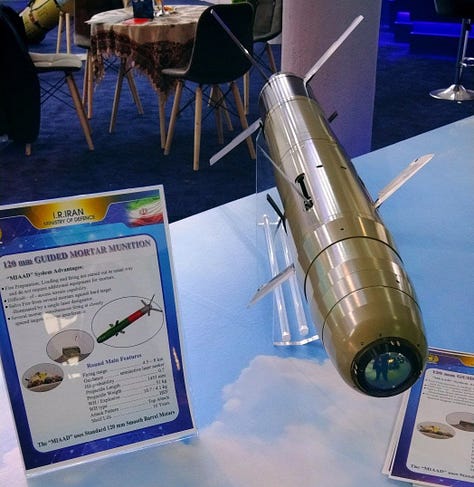

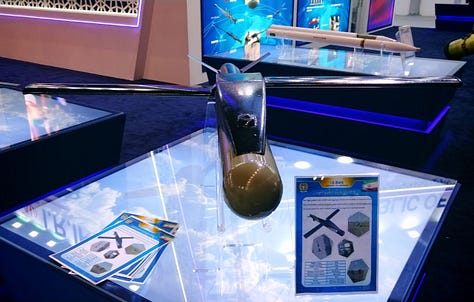
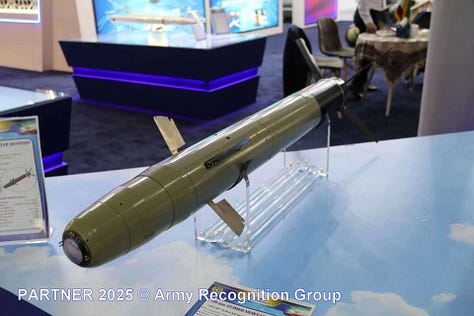
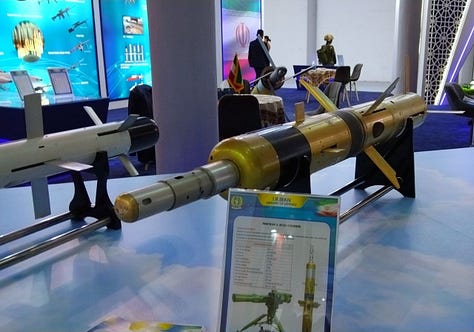
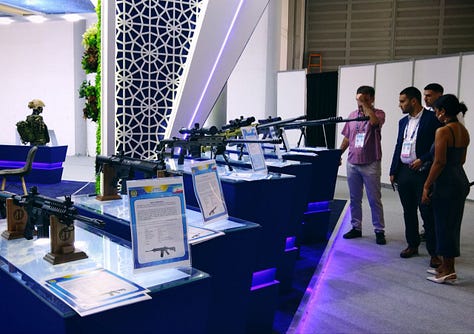
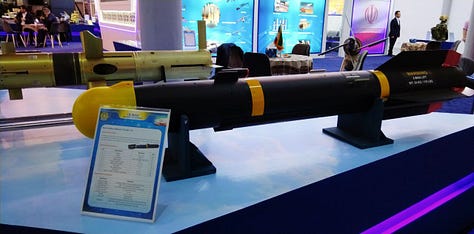
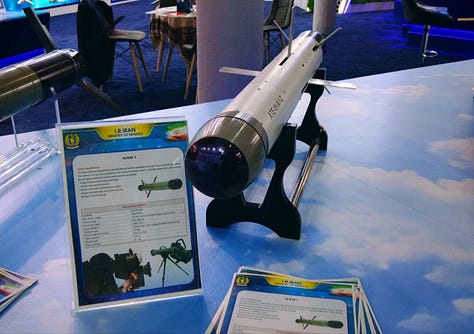
The Iranian exhibit was used to promote:
Small arms.
Anti-tank guided missiles. This notably includes the Almas-1, which employs a fiber-optic cable for communication uplink/downlink so as to enable a lofted, non-line-of-sight, and top-attack human-in-the-loop mode. The Almas family was employed by Hizballah in Lebanon against Israel from early 2025 onward to seemingly good effect, albeit at what appears to have been a very limited scale. Israel notably targeted a facility associated with the production of the Almas family, a purposeful targeting decision which likely reflects how seriously Israel takes the threat that this particular type of surface-to-surface missiles/anti-tank missiles—which are the reverse-engineered Iranian derivatives of the Israeli Spike family that Hizballah reportedly captured in 2006—pose should they appear in very large numbers in the hands of Hizballah in Lebanon.
Small guided glide bombs.
A guided 120 mm mortar shell equipped with a semi-active laser homing seeker.
Air Defence radars. Even though Iran is promoting its air defence radars to prospective export customers, it is unlikely to be in any position to deliver such systems any time soon, given the large-scale losses of this essential type of military equipment in the June 2025 Iran-Israel War.
Surface-to-air missile systems. This notably includes the Majid, which is a passive short-range air defence system that is best used against higher-flying and larger fixed-wing ISR drones. Short-range air defence systems like the Majid were notably either not deployed in western Iran in meaningful numbers at the outset of the June 2025 Iran-Israel War or were neutralized by Israel in that sector at the outset of the conflict. Given the threat posed by Israeli armed fixed-wing ISR drones to Iranian ballistic missile launchers and launch operators in the war, the promotion of the Majid and other surface-to-air missiles more generally to prospective export customers is somewhat surprising.
Coastal defence systems, including subsonic anti-ship cruise missiles. Serbia is, of course, a landlocked country, and Iran’s subsonic anti-ship cruise missiles hardly stand out as largely undifferentiated, essentially commoditized systems in an increasingly crowded market segment.
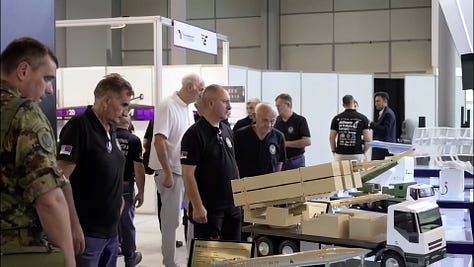
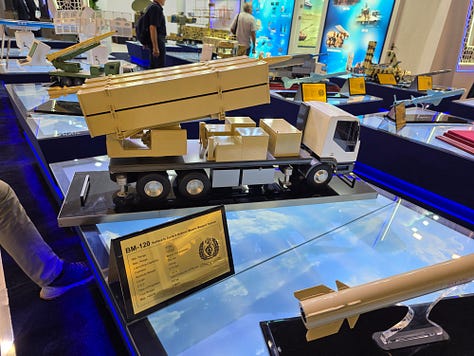
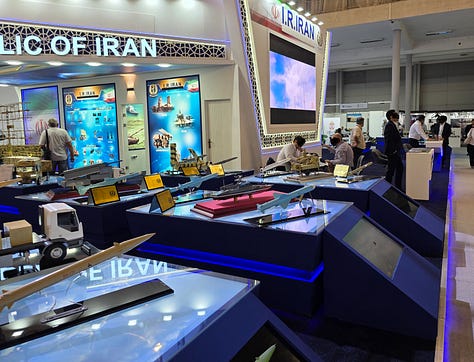
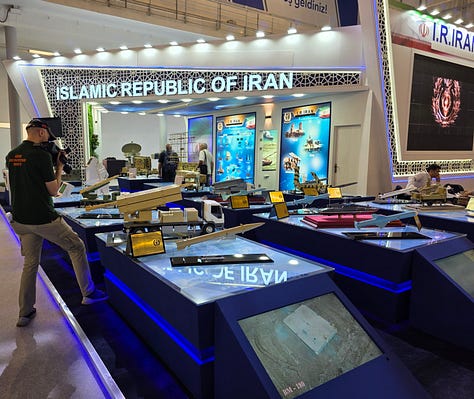
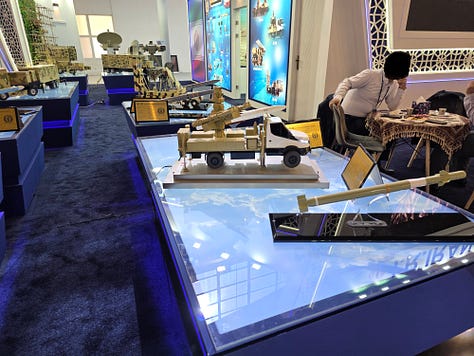
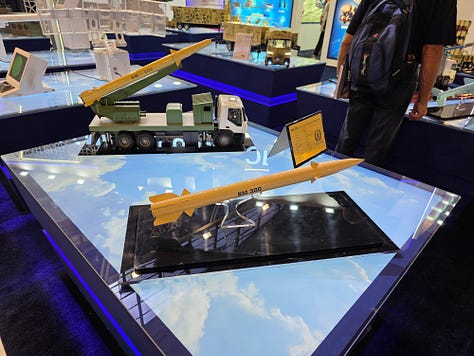
Two short-range—sub-300 kilometer range—ballistic missiles. Iran promoted the BM-120, which is a 368 mm diameter solid-propellant design that can deliver a 150 kilogram warhead over 120 kilometers, and the BM-300, which is a 610 mm diameter solid-propellant design that can deliver a 450 kilogram warhead over 300 kilometers. BM-120 and the BM-300 are the respective export designations for the Fath-360 and the Fateh ballistic missiles. It is worth noting that missiles of this range class are reported to have been transferred to Russia at some point during the Russia-Ukraine War, but this cannot be independently confirmed.
Iran notably did not promote the Shahed-136 propeller-driven fixed-wing strike drone at Partner-2025 in Serbia in the same manner that it did at the IQDEX-2025 and LIMA-2025 military-industrial exhibitions that were respectively held in Iraq and Malaysia earlier this year. While this may reflect sensitivities concerning the promotion of the Shahed-136 in Europe at a military-industrial exhibition that was attended by many Western delegations, it may also reflect Iranian efforts to stockpile propeller-driven fixed-wing strike drones following the large-scale use thereof in the Iran-Israel War and, perhaps more importantly, disruptions to ballistic missile production as a result of the damage that Israel very purposefully inflicted.



